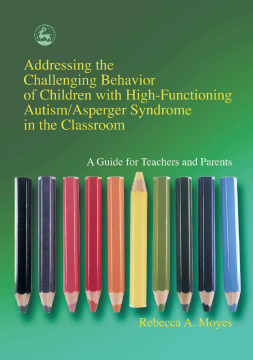
BOOK
Addressing the Challenging Behavior of Children with High-Functioning Autism/Asperger Syndrome in the Classroom
(2002)
Additional Information
Book Details
Abstract
How do teachers and parents of children with autism address a child's social skills? And what do they do about problem behaviors? This book provides possible explanations for these behaviours, and a wealth of practical help for both teachers and parents to address them. Teachers learn how to create environmental supports and how to incorporate specific teaching strategies. Students with autism learn the new skills they might need, and ways of making their behavior more acceptable. This book is full of practical tips on how to tackle different kinds of challenging behaviors both in the classroom and outside it.
Moyes gently guides her reader through the practical aspects of constructing and evaluating an effective behaviour support programme.Teachers working with children with autism will find this book particularly helpful in developing a coherent approach to supporting children in the classroom.
www.escalate.ac.uk
Rebecca Moyes is a former teacher, and today works as an educational consultant for children with autism spectrum conditions. Her oldest child has Asperger Syndrome. She is the author of Incorporating Social Goals in the Classroom, also published by JKP.
This book provides an excellent introduction to functional analysis of behaviour. The principles of examining behaviour and devising interventions are set out as realistic targets for the class teacher. The clear explanations and practical examples guide the reader through the steps of how to analyse behaviour and put individually tailored interventions into practice.
Communication
I found this to be a useful book. The approach it recommends is based on well-tired principles of positive behaviour management the author's style and obvious personal experience remind the reader to look beyond the challenging or nuisance element of behaviour to consider what that behaviour is trying to communicate, something that is equally applicable for all children - not just those with autistic spectrum disorders. I found this to be a very practical book and believe it would be a useful resource for anyone working with pupils whose behaviour is challenging, but especially those with autistic spectrum disorders.
NASEN
